
We are back at the International Folk Art Market (IFAM) here on Saturday morning in Santa Fe, New Mexico. Thanks are in order for Dion Terry for his breakfast recommendation of the Pantry Restaurant over on Cerrillos Road. Prepared with the experience that comes with having been operating since 1948 and mastery of green chili, our first meal of the day hit the mark.
Gasali Adeyemo operates this booth with beautiful Adire cloth from Nigeria. Nothing caught Caroline’s eye, but then she had taken a couple of workshops with Gasali a few years ago and already owns a few pieces.
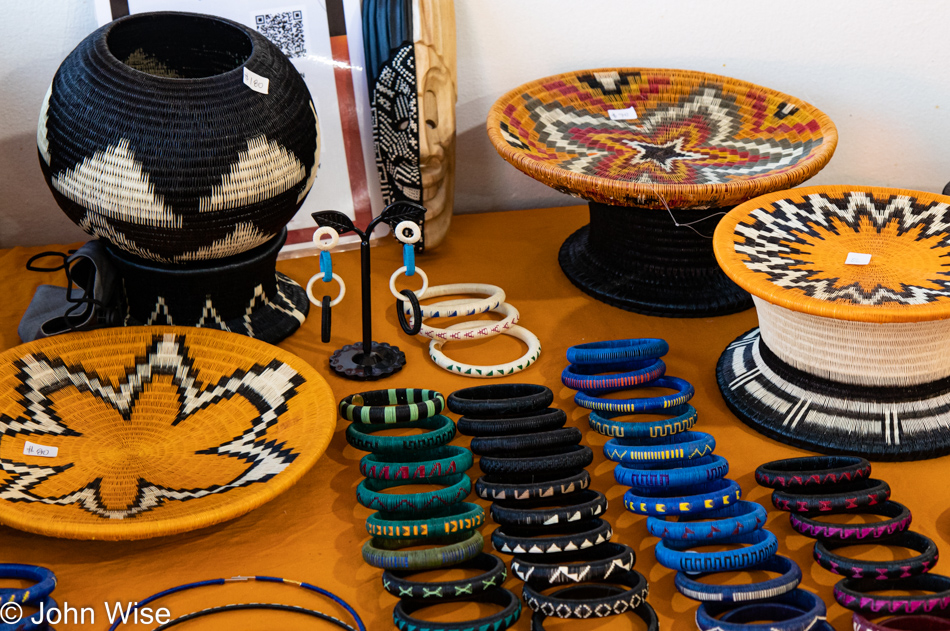
The center stack of bracelets is missing one now that Caroline bought it from the ladies at Wounaan Craft Group out of Colombia.
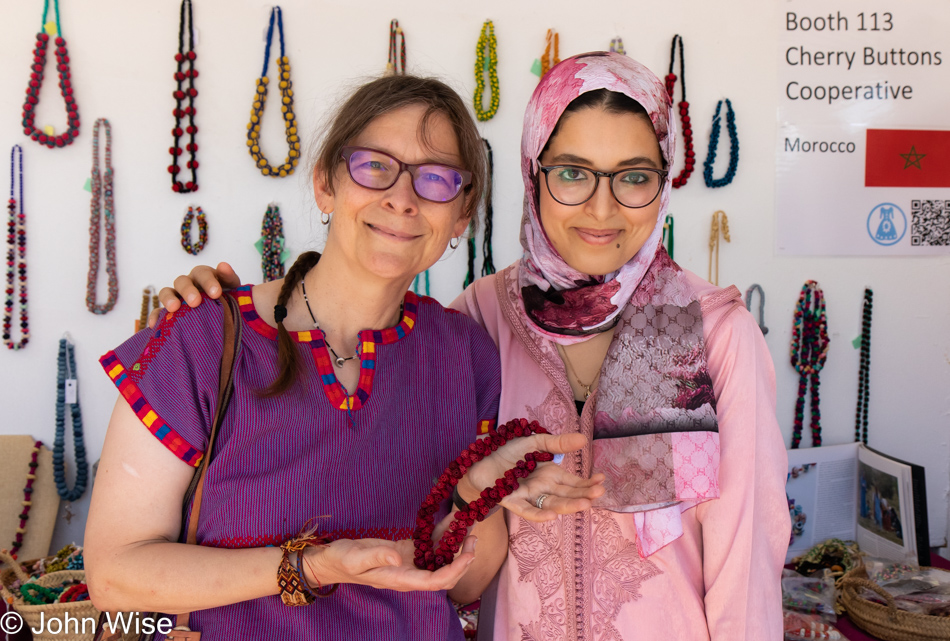
Out of Morocco, the women representing Cherry Buttons Cooperative sold Caroline this necklace.
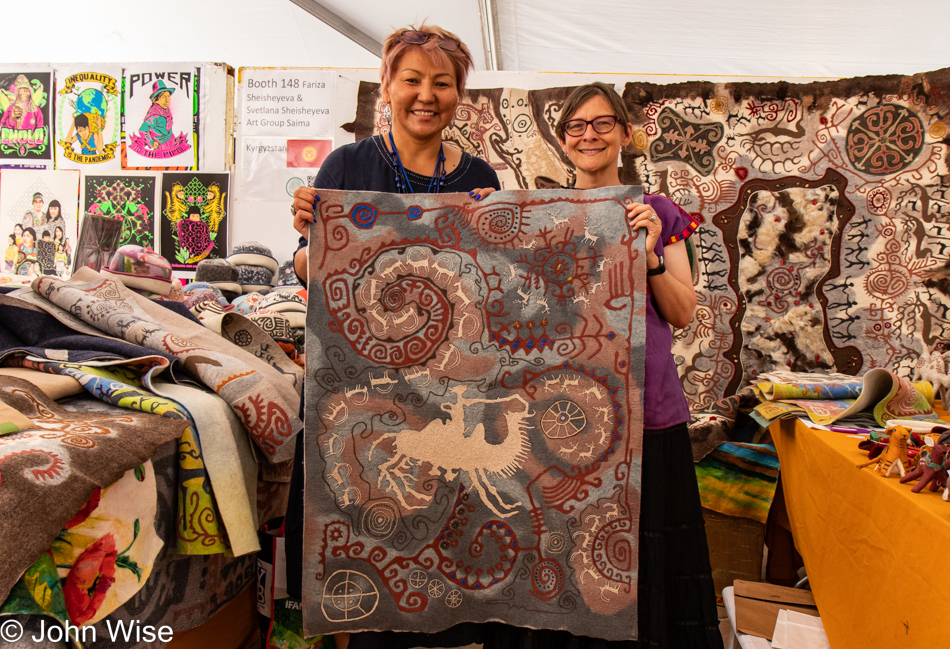
Fariza Sheisheyeva and Svetlana Sheisheyeva of Art Group Saima from Kyrgyzstan sold us this exact piece of felted artwork this morning, our priciest acquisition at IFAM. If budget were of no concern, the work behind Caroline to the right would have been going home with us, but we have our limits.
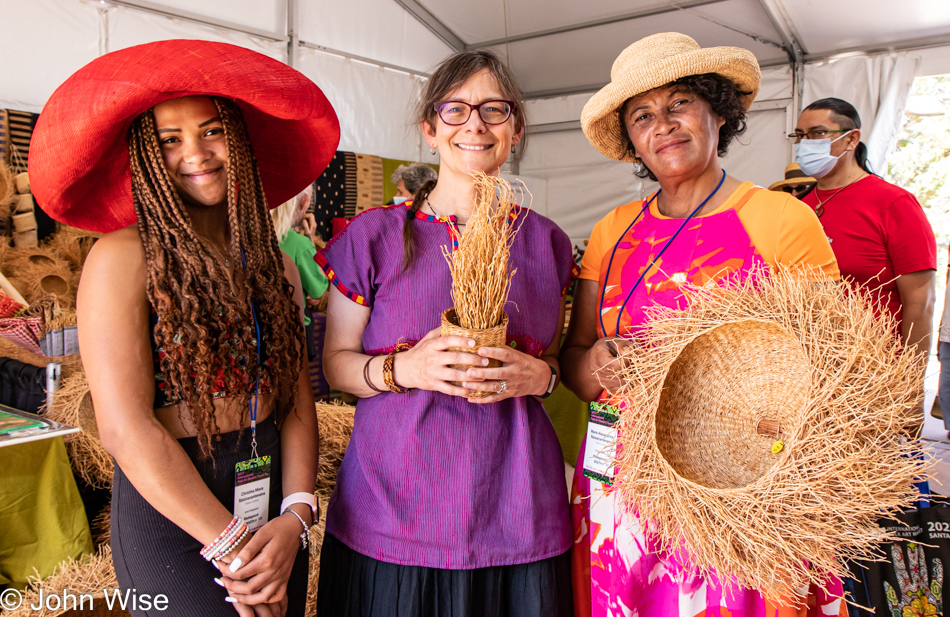
And finally, Marie Alexandrine Rasoanantenaina of Tahiana Creations from Madagascar and her lovely daughter, who graced the cover of the IFAM 2022 program guide, sold us our first bits of vetiver root. If you’ve never smelled this stuff, it’s impossible to describe, but then again, so is the scent of strawberries.
Lessons learned from our first visit: 1. pace ourselves better so we don’t visit all the booths in an hour. 2. plan on catching some of the entertainment. 3. we must visit the museums. 4. buy tickets for all the days as there we last-minute things Caroline wanted to return one more time but found that Sunday morning entries were sold out. [Add one more: Read the artist stories and jot down if any stand out prior to our visit. I had avoided reading the artist’s write-ups ahead of time so I would not influence myself, but when I went through them later, I realized that I missed a couple. – Caroline]
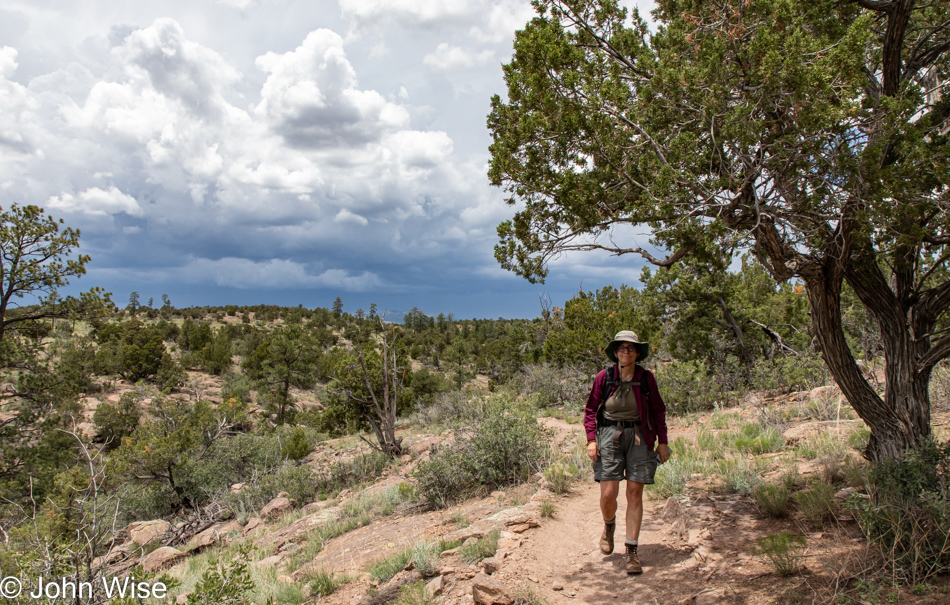
After leaving Museum Hill, we were ready for our next adventure. Competing for our attention this weekend were visits to two national monuments because as important as fiber arts-related things are to Caroline, she also has yearnings for every junior ranger badge she can earn. Here we are on the Frey Trail at Bandelier National Monument after failing to heed the signs that advised us to take the shuttle from outside the park over to the visitors center. Considering the time of day, we feared we might miss the last shuttle out and decided to head directly to the park and try our luck. At the entry gate, the ranger allowed us to continue on to the Juniper Campground parking lot and wait for the next shuttle. At the shuttle stop, we spied the sign for the Frey Trailhead, which said the visitors center was 1.5 miles away; since the shuttle was about 30 minutes away according to the schedule, we figured we could get there around the same time from the look of the trail ahead.
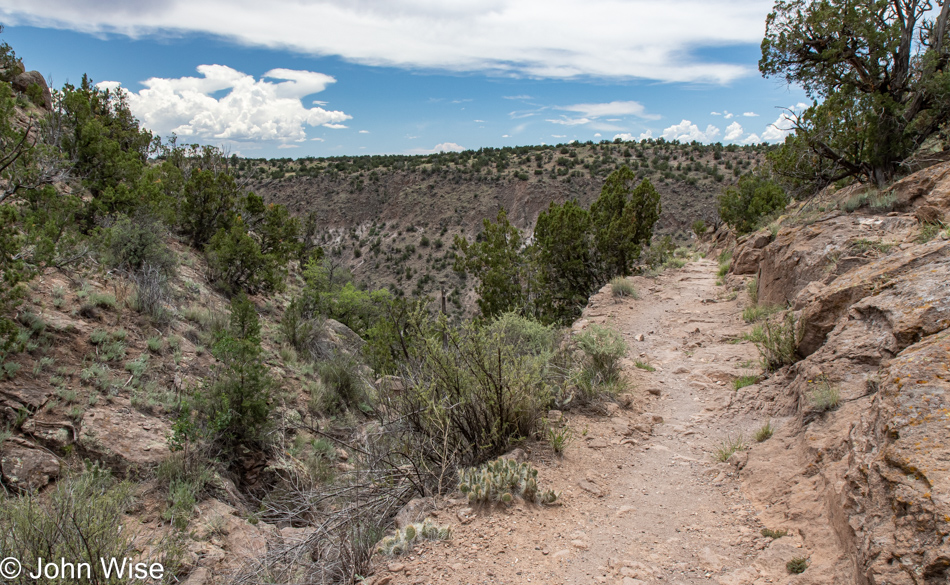
Oh, it’s not just a relatively flat walk to the visitor’s center?
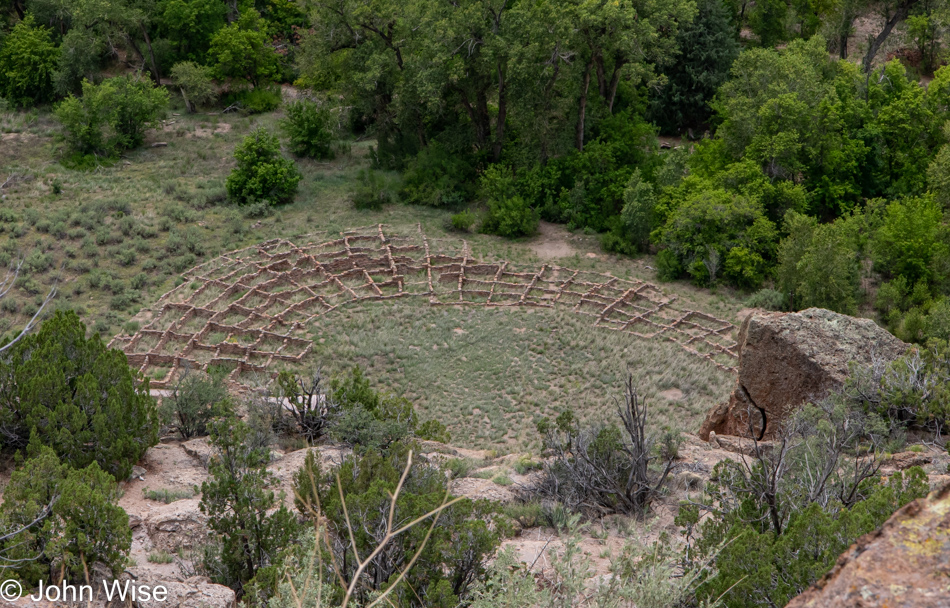
The view from the Tyuonyi Overlook as we start our steep descent to the valley below.
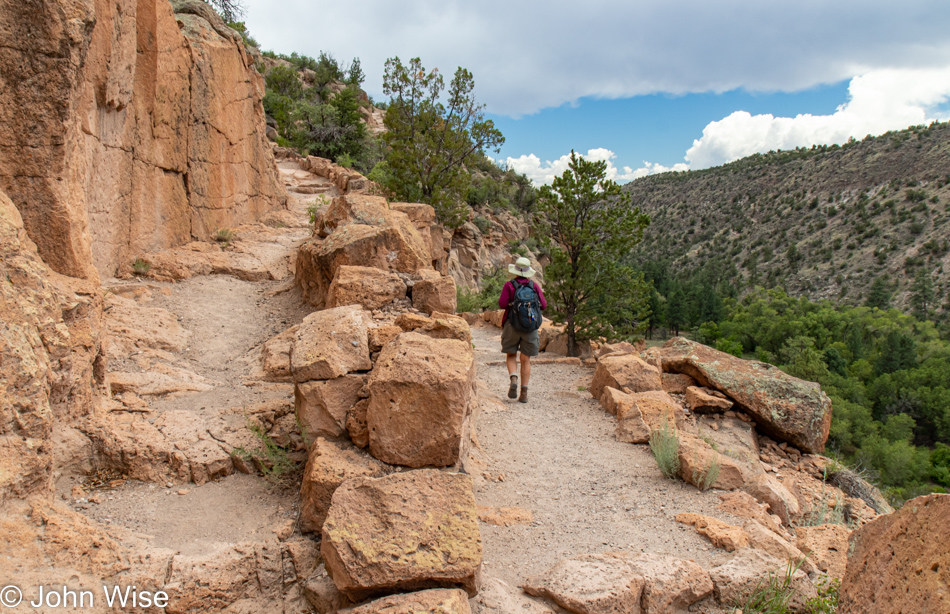
What an incredible way to enter the heart of the park! Such a lucky turn of fortuitous events that had us coming in this way.
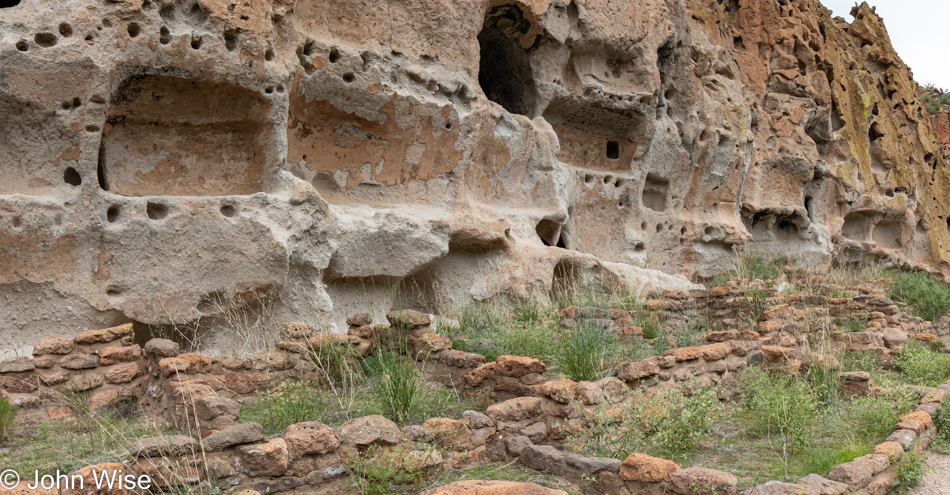
Why is nothing looking familiar? Could it be that the last time we were here was back in 2003, and we were 19 years younger than we are now, with countless adventures between then and now to cloud our memories?
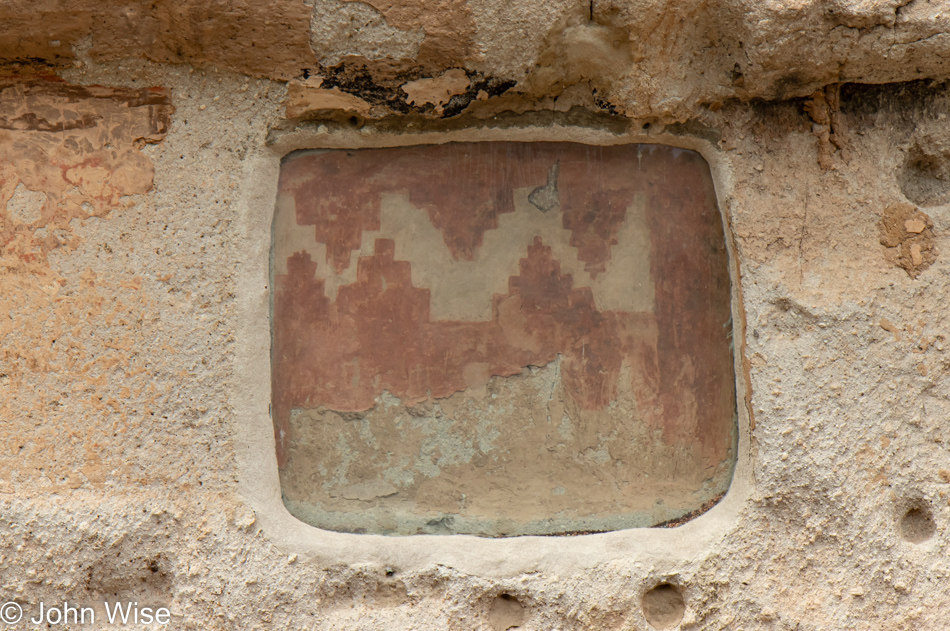
I can’t say I understand the dynamic at work when this motif was painted here at that point in history long ago. Why is this inset from the wall around it? If you look to the upper left of this image, there are remnants of plaster on the wall, and in the photo above this, you can still see plaster on the back walls. So, it’s not strange that walls are adorned with some type of decoration, but this one is inset; I’m confused.
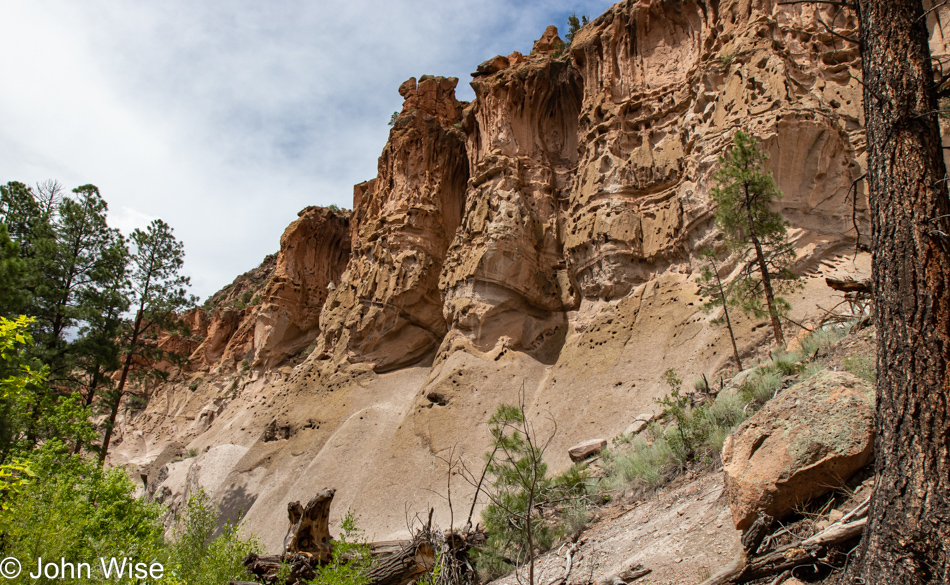
Here we are out in Bandelier National Monument, only able to gaze upon a deep geographic history and a mostly unknowable cultural history that arrived in our age without a clear narrative. Science can tell us about the natural forces at work and the composition of minerals that laid the foundation of the environment, and clues from the ancestral Puebloans help create the fragmented story of those who once lived here, but I want more. What was it like to walk here before it was named Frijoles Canyon, back when the indigenous people building homes here nearly 1,000 years ago were busy living lives?

We use ladders to climb on high, or we don’t, and then return to cars that bring us to food and hotels. We who roam far and wide using machines and electronics are as far removed from these ancestors as purse dogs are from wolves. I want to look into their world, their view of nature, their diet, and how they laughed and loved. Instead, I allow myself mere minutes to glance over the things that are able to be seen, and in some instances, such as the ladder system ahead of me, I can only go so far before my fear of heights will stymie me.
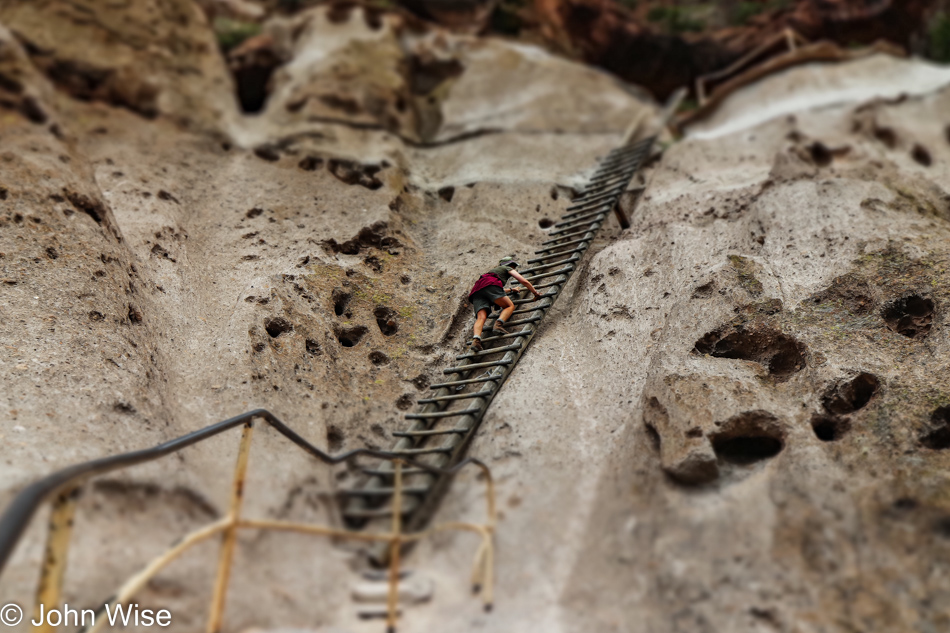
Caroline, on the other hand is better at conquering her fear and ascends the ladders to the platform above. It turns out that 19 years ago, I, too, was able to make my way up there, which allowed me to capture a photo from within a rebuilt kiva that was still visitable back then. Regarding the tilt-shift effect of the image, I took this with my DSLR and have no idea what setting I accidentally hit as I snapped off three similar photos before I recognized the mode dial was not set correctly and switched back.
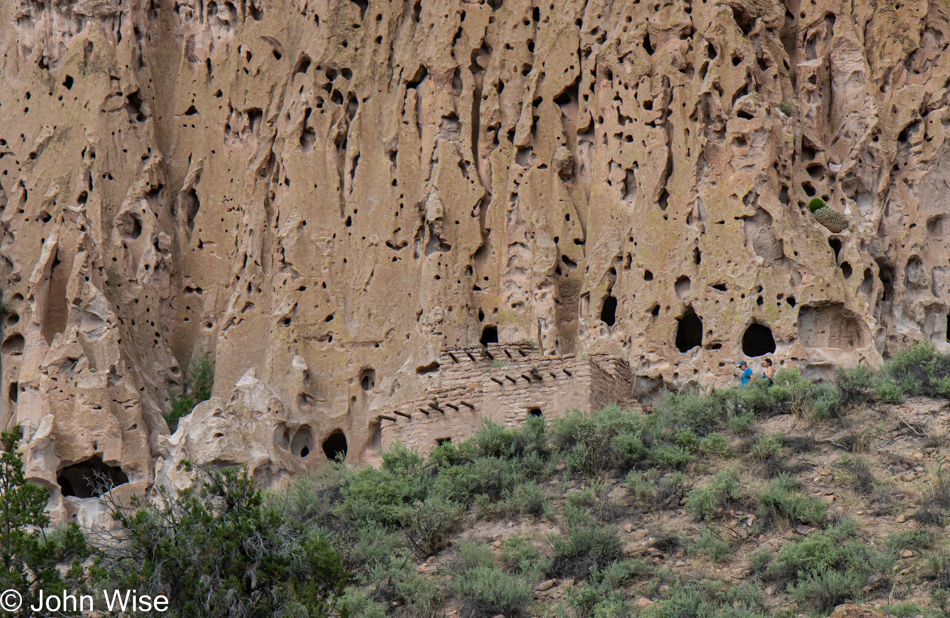
Hey, National Park Service, I would pay hundreds of dollars per day to sleep in one of those rooms up there, to sit in on a ceremony in a kiva, and to eat the foods that were eaten here a thousand years ago.
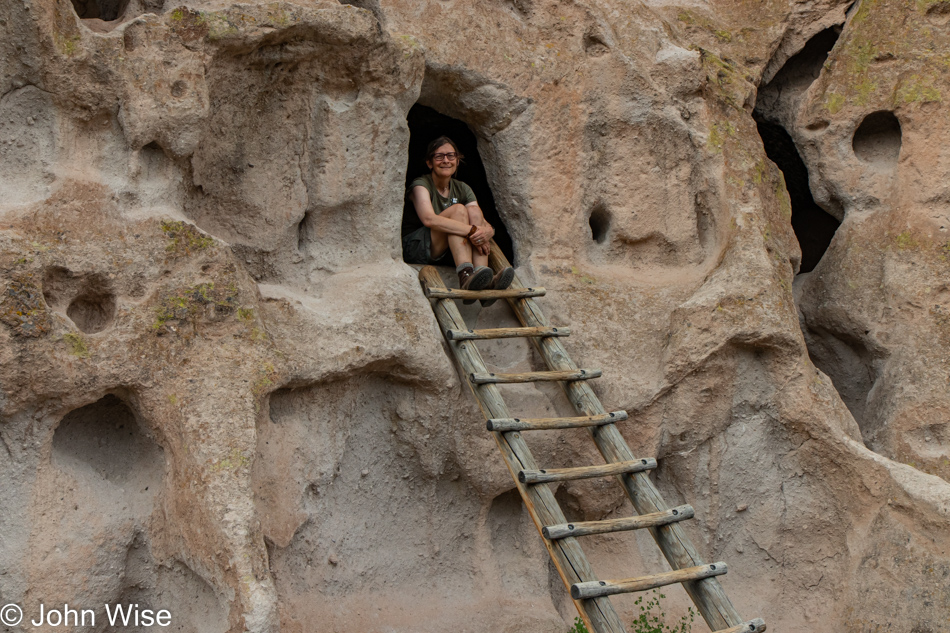
It was right here back in 2003 that Caroline sat in the same spot on a similar ladder as I took her photo. Little has changed other than we are aging but our curiosity and fascination are still running hard.

With the visitor center closing soon, Caroline had the briefest of times to plow through the Junior Ranger booklet and answer enough questions to now add this badge to her ever-expanding collection from all over the United States.
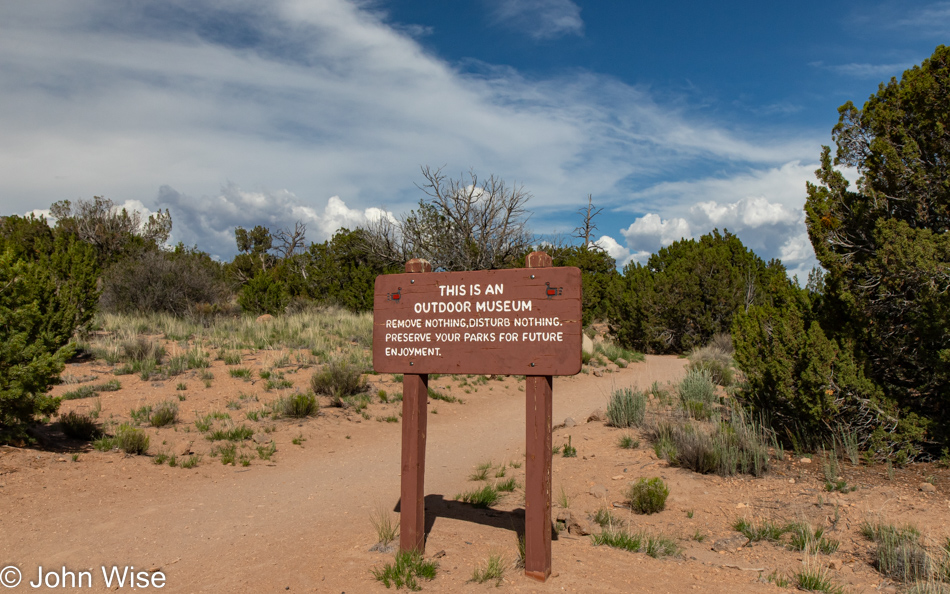
Twelve miles down the road but still, in a corner of Bandelier National Monument, we find this: the Tsankawi Ruins trail. We thought we’d skip this short 1.5-mile loop as we were already tired, but the idea of not seeing the seeable when we were right here in this corner of New Mexico seemed like we would have blown an opportunity.
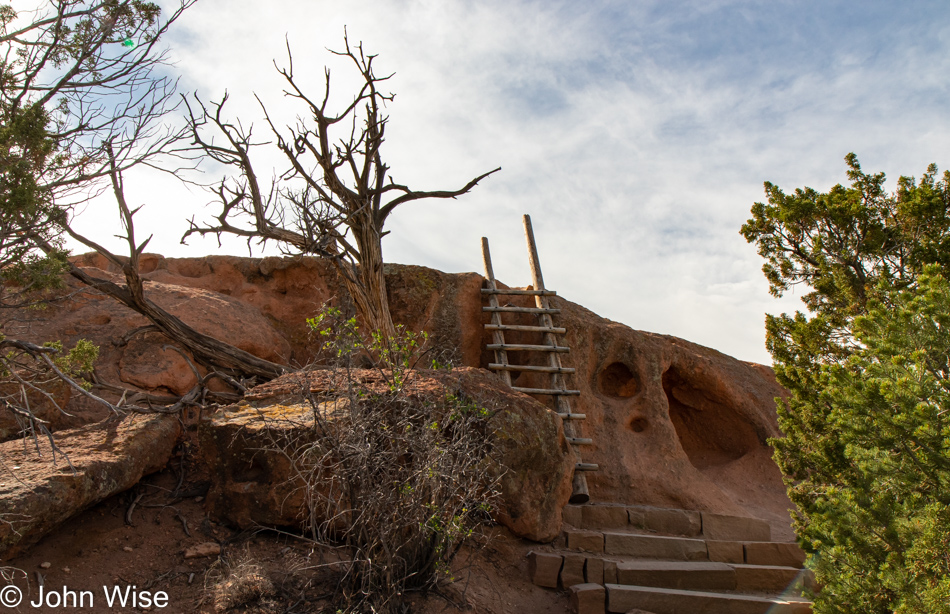
And so we did, up the trail and up the ladder.

An amazing trail has been carved into the soft, porous rock of volcanic ash called tuff.
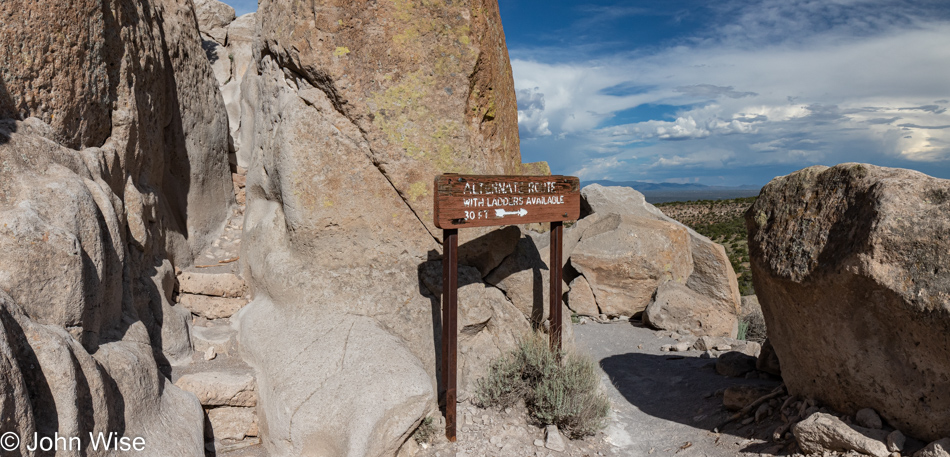
Maybe I should have tried the narrow passage on the left, but I opted for the “Alternative Route” to the right. Caroline took the steeper, narrow trail.

Up the ladder, I crawled to meet with Caroline again.
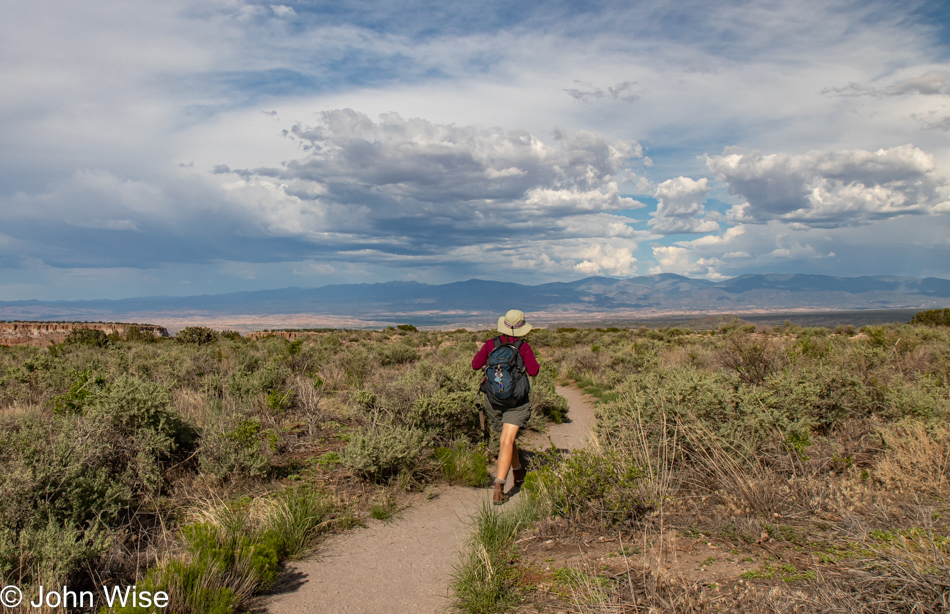
Atop the volcanic mesa, we strode, looking for the unexcavated ruins that cannot be seen on the horizon.
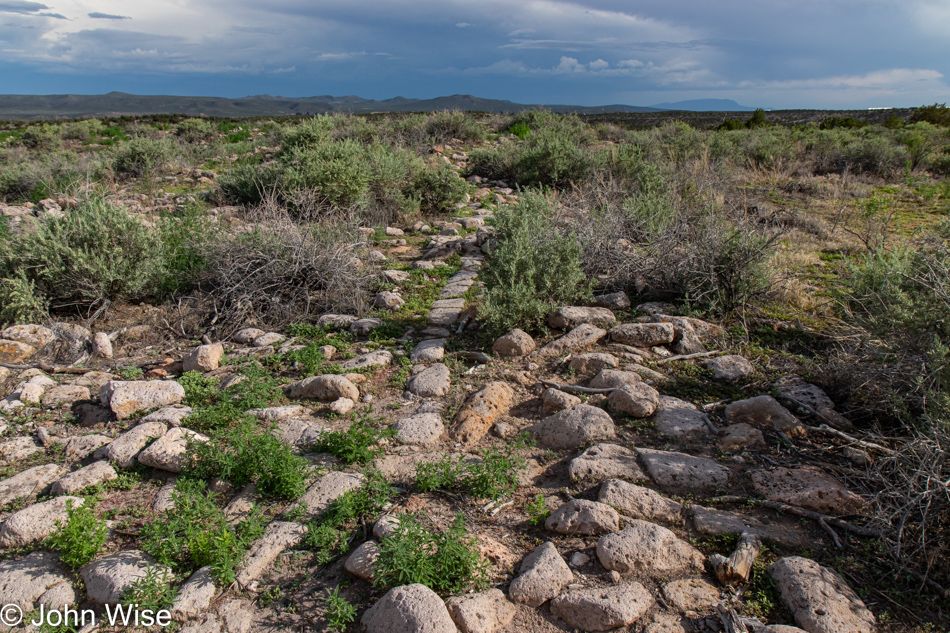
And the reason they were not seen is that they truly are ruins collapsed and covered by time.
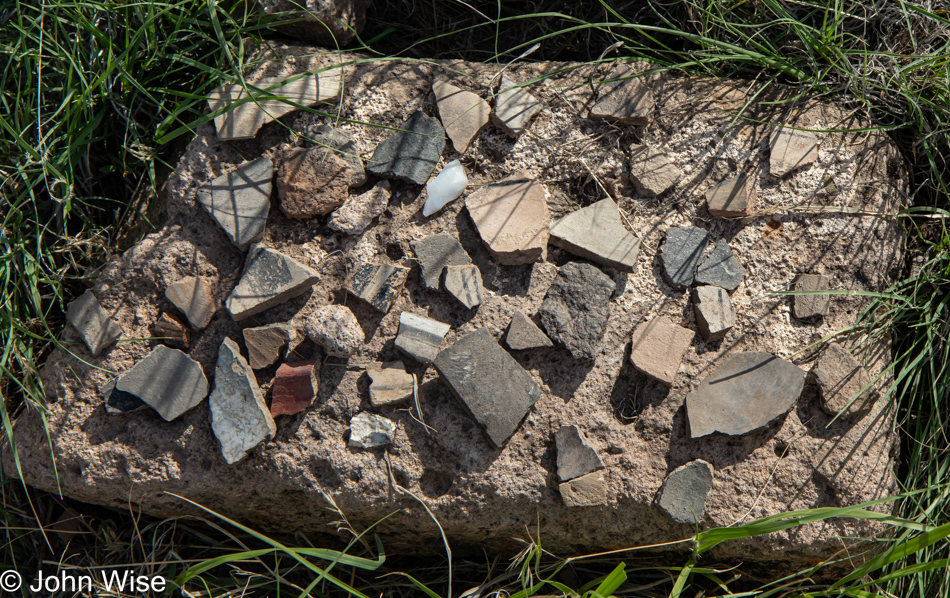
Along the way, others have found hints from those who once lived here and, fortunately for all who visit, have left these treasures for others to witness.
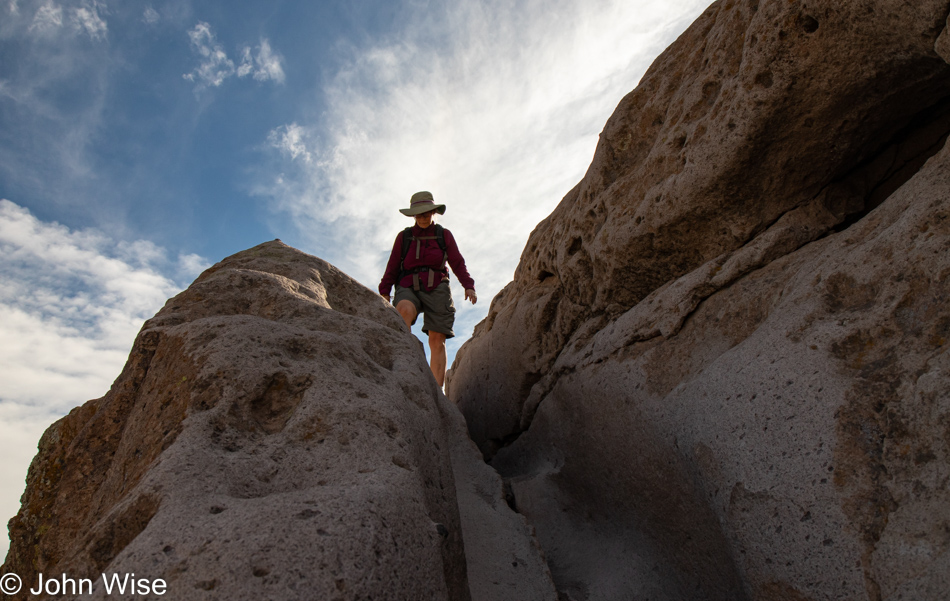
Okay then, out here at the end of the mesa, some parts of the trail are starting to feel sketchy. Not that it isn’t well constructed, but it’s that old fear of heights thing again that’s making me nervous.

Too late to turn around and, anyway, I really do want to see what is ahead if for no other reason than to admire the genius of this path.

Who knows if others only occasionally stayed here, lived here, or offered it up to visitors arriving from other lands, but today, for nearly a whole minute, it was ours.
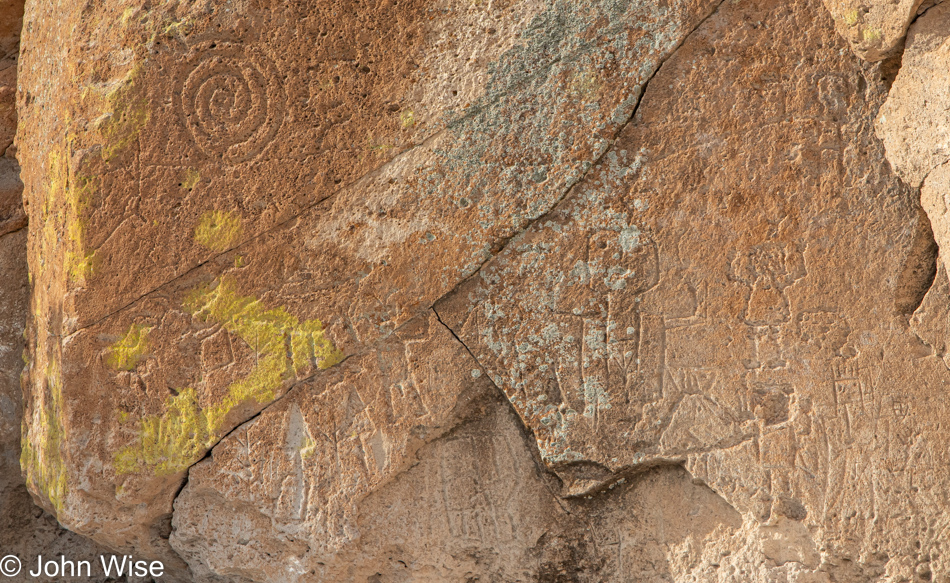
On the trail that brought us out here, we were wondering if we’d somehow missed the promised petroglyphs, but here they are.

A close-up from the right of the panel above.
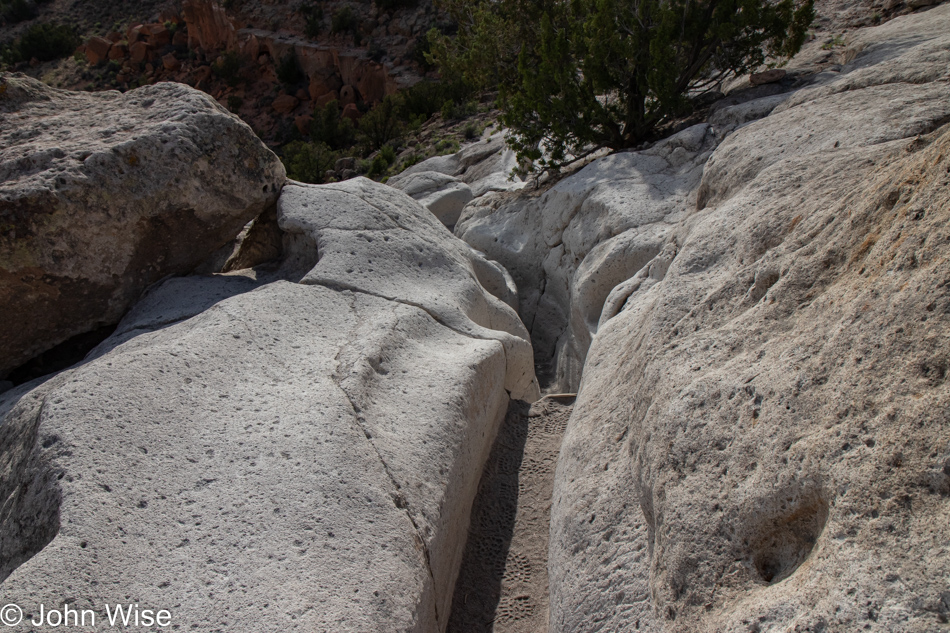
Look closely at the right and left of the slot that’s barely a boot wide, and you can see the wear of hikers who straddle the trail; there are even deeper indentations one can step into in order to not wiggle through the narrow path.
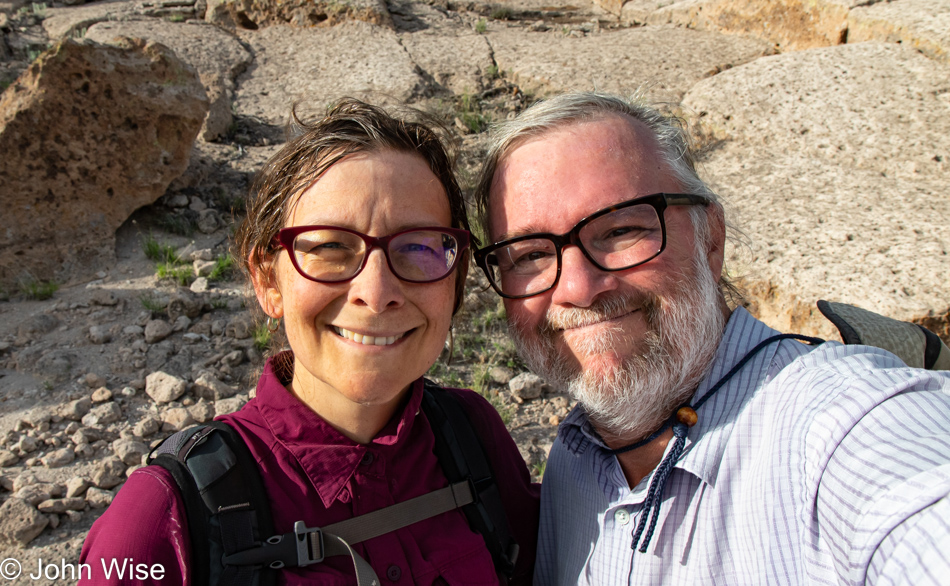
Selfie time before things get hairier, and I don’t mean the length of my beard or ponytail.
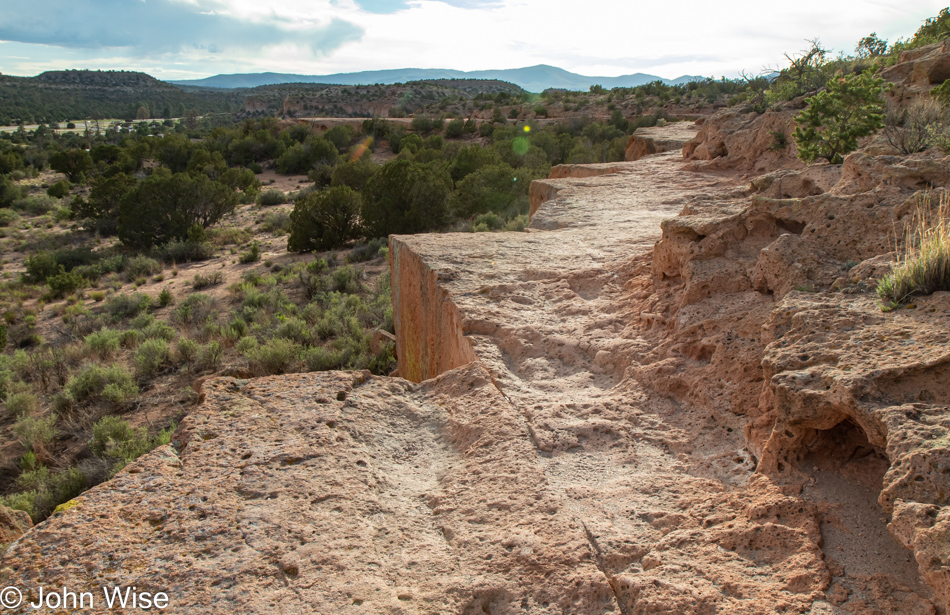
This wasn’t the first section that I had to clamp down on my resolve to hike past a gut-clenching razor’s edge of terror. Our car is just out there in the distance; I was not thrilled about really entertaining ideas of a U-turn only to face the other pressure points all over again.
From the National Park Service website regarding the Tsankawi Ruins trail: ” It is not a hike recommended for people with a great fear of heights.” I can admit that it feels great to overcome my weaknesses.

Plus, there are rainbows at the end of the hike. So, I’m lying because we were already on our way back to Santa Fe when we pulled over to snap a photo before it quickly disappeared, but had I gone with my exaggeration, I think it would have made for a slightly better story.
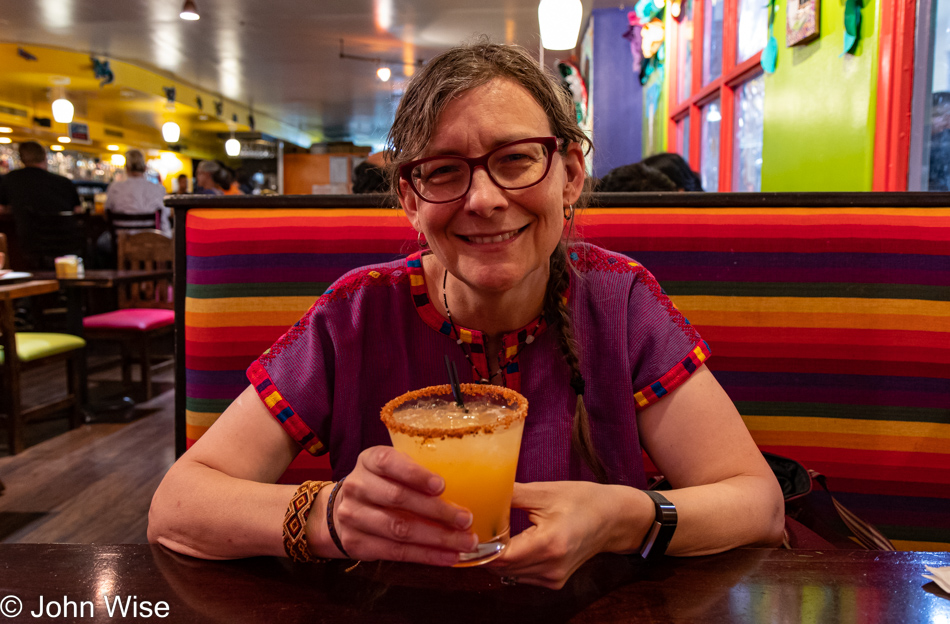
Dinner was at the busy underground joint called El Fogata Grill. It was raining when we arrived, but of all the peculiar luck, we were able to park maybe three doors down from the entrance to this restaurant right in the old city center of Santa Fe, believe it or not. Our food was nothing to brag about; then again, that might have to do with what it was competing with our meal from earlier in the day.